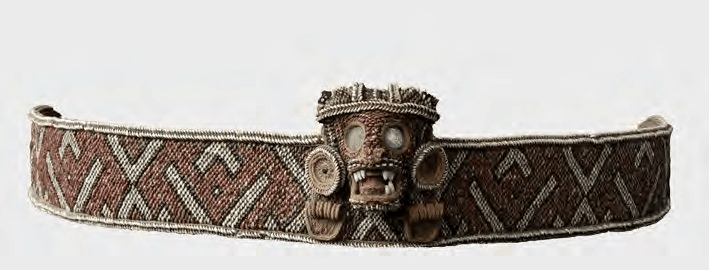Our ongoing obsession with the Taino led to our rereading of De Orbe Novo by Peter Martyr d'Anghiano. Although the author never personally traveled to the Antilles, he received the testimony and met with Columbus and various other Spaniards who crossed the Atlantic. Indeed, he even saw some of the curiosities, plants, and objects brought to Europe by those who did indeed travel. In addition, according to Bernardo Vega, our author was also one of those who recorded the details of a detailed map and description of the island of Hispaniola by Andres Morales. Furthermore, he even had access to the report of a certain friar, one of the most important sources on the religion and mythology of Hispaniola's indigenous population.
De Orbe Novo is also full of rich information and details on the Caribbean and circum-Caribbean region's peoples. For instance, an early description of Guadeloupe's population mentioned numerous villages of 20-30 houses and a public square, used for games. This useful information on Guadeloupe provides modern scholars with some rough estimate of the population of indigenous villages in Guadeloupe and other parts of the Antilles in the late precolonial period. An early reference to Puerto Rico, or Borinquen, likewise alludes to Indian informants telling Columbus that the entirety of the island was under the rule of a single king (Agueybana or the cacicazgo of Agueybana?). Supposedly these Puerto Rico natives were able to communicate with the Spaniards via interpreters from Columbus's first voyage. Even so, one wonders if Puerto Rico truly was under the dominion of a single cacicazgo.
This same source is similarly important for piecing together the intricacies of inter-cacique conflict and alliances in Hispaniola, or Haiti. Guacanagaric, the cacique in the north who first welcomed Columbus, blamed the massacre and destruction of the men left by Columbus at La Navidad on two more powerful caciques. And another cacique in the northern part of the island was described at living in a spacious house surrounded by 30 ordinary houses, perhaps another indication of a Taino village size. Martyr d'Anghiera's description of Haiti's indigenous people even included mention of trade with other islands for plates, seats (duhos), and articles manufactured with black wood (guayacan?). We also learn from this same source that the cacique Guarionex married his sister to Diego, the interpreter of Columbus. This was surely a great attempt to seal an alliance with the Spanish via a familiar other (Diego) who understood the Spanish, an entirely new type of other who threatened the political equilibrium of the island. Yet Guarionex would later resist the Spanish after the defeat of Caonabo and his brother (who allegedly raised 5000 troops against the Spanish only to be defeated by their cavalry). The fact that Guarionex taught an areyto to Mayobanex was so significant that the latter stood by Guarionex against the Spanish, even as his supporters allegedly abandoned him.
Jamaica's Indians were described as living in a fertile land and skilled in mechanical arts, perhaps indicating an exchange of goods between Jamaica and Haiti in the precolonial past. Cuba, on the other island, presents a number of interesting questions on the nature of indigenous Caribbean mobility and connections to other parts of the Antilles. One early Spaniard on the island reported seeing Indians wearing white tunics but a subsequent search failed to locate them. Furthermore, Spanish reported hearing of a powerful king in the interior of the island who wore clothes. Yet, this very same source also describes the Indians of Cuba as never leaving their territory and taking little notice of their neighbors. This is interesting since there may have been a presence of Yucatan Maya or other mainland populations (the Indians wearing clothes) in Cuba. While the later presence a Indian woman from Jamaica at Cozumel was noted by the Spanish, perhaps contacts between the Yucatan and Cuba were also in existence prior to the Spanish arrival.
Last, but certainly not least, some intriguing details about the Indians of the northern coast of South America are worthy of mention. The Paria natives, described as wearing gold and pearl collars or bracelets, claimed their gold came from a mountainous country. The caciques of their region also used duhos made of black wood, like the caciques of the Antilles. The Curiana Indians also were said to possess pearls, rich game, yucca, and used guanin. The Curiana traded pearls for gold from from the Cauchieta, a people said to have worn trousers of cotton. There was even a district of the Paria coast, Haraia, which contained rich salines, whose salt was traded to foreigners. In addition, the Paria peoples preserved the bodies of their chiefs. This is all suggestive and points to the long-standing trade links across northern South America. The reference to guanin, which we know was also used by the Taino in the Antilles, points to trade with the mainland. However, if it is true about some of the Indians preserved the bodies of their chiefs, it brings to mind the Incas and Andean civilizations. One begins to wonder about possible long-distance trade connecting to the other coast of South America.

No comments:
Post a Comment